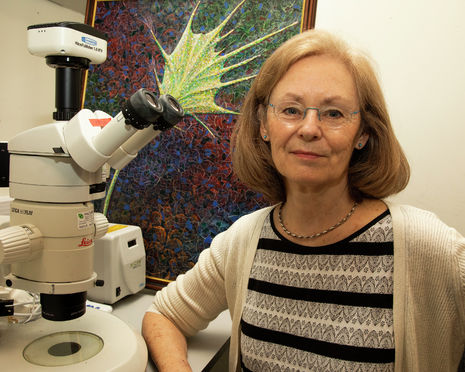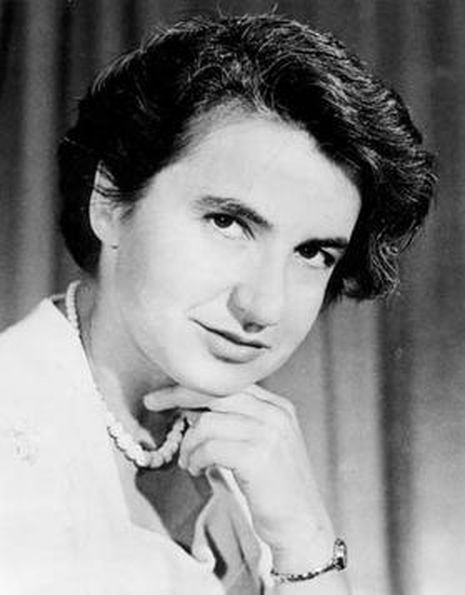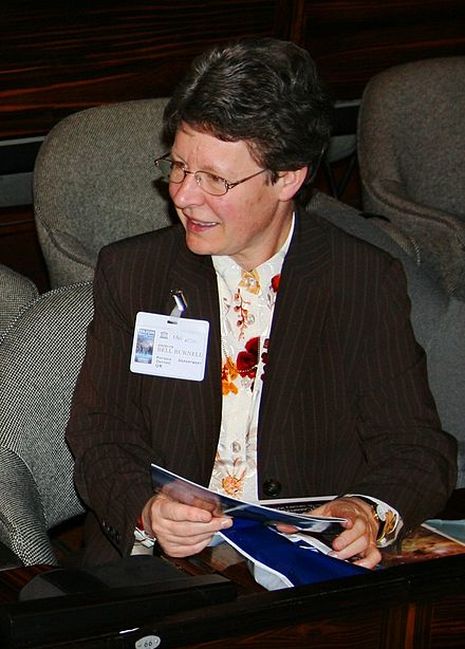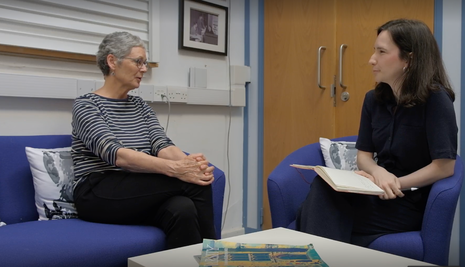A pioneer for women in science 70 years on from the discovery of DNA
The Science team speak to eminent Cambridge neuroscientist Christine Holt about what it means to be a ‘woman in STEM’

Now 70 years on from Varsity’s article about the discovery of DNA, female scientists continue to face barriers that punctuate the legacies and research traditions of the laboratories that STEM students continue to step into today.
Cambridge has not always been a beacon of diversity – and female scientists have, in particular, continued to face unique challenges in Cambridge laboratories that their male counterparts have not necessarily experienced.
The Varsity archives represent this clearly – on 30 May 1953, Varsity published an obscure piece about Dr Crick and Dr Watson’s “X-ray discovery”. Fast forward 70 years, DNA is the mainstay of every biological Natural Scientist or Cambridge Medic’s revision cards.
But the discovery of DNA in 1953 by Crick and Watson was, arguably, only possible due to the work of female scientist Dr Rosalind Franklin. Franklin played an important part in laying the groundwork for Crick’s model, but her contribution was initially underplayed.

10 years ago, the Eagle pub unveiled a new plaque commemorating the contribution of Rosalind Franklin alongside Watson and Crick – after Newnham Fellow Dr Emma Mawdsley was sitting in the Eagle “with a beer one day looking at the plaque and thought: ‘What about Rosalind?’” Physicist Professor Dame Athene Donald, master of Churchill College, also argued that “the crucial role of Rosalind Franklin and others is understood now, and I think that aspect of the story has far more currency than it did 25 years ago, with buildings and prizes now named in her honour. And I think that is maybe what people take away now as much as the science, the way women in the field were regarded back then.”
And it is not an isolated story. For example, the Nobel Prize in 1967 for the discovery of pulsars was awarded to two male scientists, overlooking its first discovery by Murray Edwards alumna Dame Jocelyn Bell Burnell.
The legacy of the discovery of DNA, as so clearly represented in the Varsity archives epitomises the challenges faced by scientists who are not white; and scientists who are not male. Varsity revealed that Dr Watson, in 2019, had four titles removed after making remarks about race that were “unsubstantiated and reckless” and “unsupported by science”. Watson claimed that there was a statistically significant difference between the IQs of black people and white people.

Cambridge is evolving – and the science community is only starting to grapple with these issues. Female scientists and scientists of colour are becoming increasingly vocal about the need to decolonise science curricula in the University and call out instances of sexism in certain departments, where one speaker in the Chemistry Department called a female scientist an “old bird” in the middle of a speech commemorating the role of women in chemistry.
Varsity got the chance to speak to an eminent neuroscientist, Christine Holt about these issues to commemorate the seventieth anniversary of the discovery of DNA, and to understand how the experiences that female scientists like Christine faced as a student and a young academic may have changed or continue to persist in the University’s academic culture.
Christine studies developmental neuroscience and was awarded the Brain Prize this year – a highly prestigious award awarded to scientists who have made an “outstanding contribution” to the field – and shares the £1.1 million prize with two other scientists. At the time, Christine said that: “Receiving the prize is an honour beyond my wildest dreams.”
Reflecting on how far Cambridge science has advanced since the early days of molecular biology in 1953, Christine remarks that: “When I joined the field, it was wide open and to me very exciting. There were so many open questions. You could think of your own experiments to do. It’s much harder for students to carve out a territory of their own. There’s so much that we don’t know, but the techniques are much more complicated and sophisticated – it makes it much harder for a person to answer questions on their own. It’s much more collaborative. In my day, I could just go into the lab with a scalpel and a needle.”
Christine highlighted the challenges that she faced in receiving a tenure-track position early on in her career before she arrived in Cambridge – possibly due to the prejudice of her mostly male faculty board and the presumption of “nepotism”, as her husband was also a highly-regarded neuroscientist. Shockingly, she recollected that when she was about to go on maternity leave for her first child one of her colleagues mentioned that the other female scientist in the lab returned a day after giving birth. A culture of misogyny was a prominent part of the lab culture for female scientists.
Yet, as far as Cambridge was concerned, Christine notes the decisive shift there has been in science departments in the University to promoting inclusivity. Christine remarks that managing a lab is often like running a business – caring for the welfare of your post-docs and PhD students is as much of a primary concern as making important breakthroughs in research.
The genuine instances of sexism that Christine has encountered have been on University boards, rather than in Cambridge science departments. Christine is a Fellow of Gonville & Caius College, which has been at the centre of debates surrounding free speech, trans rights and gender critical speech – though Christine did say that she was not involved or aware of the wider controversy in the College.

Cambridge continues to clearly be the centre of scientific discovery, but traditionally marginalised communities in science are challenging the status quo of their disciplines and are beginning to reflect – as Christine has – on the shifting nature of lab cultures in the University.
So how much has Cambridge Science really changed in the past 70 years? Perhaps with greater intensity than the wider scientific community, Cambridge is increasingly acknowledging the contributions of female scientists, on whose shoulders major scientific discoveries, like DNA, have stood upon.
 News / Proposed changes to Cambridge exam resits remain stricter than most7 May 2024
News / Proposed changes to Cambridge exam resits remain stricter than most7 May 2024 News / Cambridge students set up encampment calling for Israel divestment6 May 2024
News / Cambridge students set up encampment calling for Israel divestment6 May 2024 Features / Cambridge punters: historians, entertainers or artistes? 7 May 2024
Features / Cambridge punters: historians, entertainers or artistes? 7 May 2024 Sport / The ‘netball girl’: myth or reality?7 May 2024
Sport / The ‘netball girl’: myth or reality?7 May 2024 Theatre / A nuanced and neurodivergent Carrie comes to the ADC6 May 2024
Theatre / A nuanced and neurodivergent Carrie comes to the ADC6 May 2024





